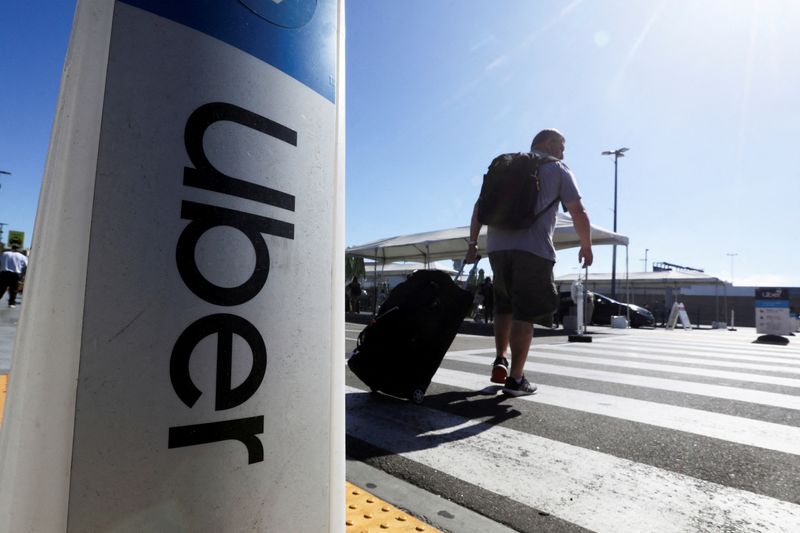Investing.com -- Uber Technologies Inc . (NYSE:UBER) received a boost last Friday when S&P Global (NYSE:SPGI) Ratings upgraded its bond rating to BBB- from BB+, propelling the ride-hailing giant into the Investment Grade category from High Yield.
BofA Securities analysts emphasize that the upgrade reflects Uber's strengthened credit metrics, which are anticipated to improve further as the company continues to execute its growth strategy.
“The Street expects free cash flow to grow at a 45% 3-year CAGR to $10.3bn in 2026, which we estimate would lower Uber’s net long-term debt leverage (on FCF) from 1.2x in 2023 to -0.9x,” said analysts at BofA in a note dated Monday.
In addition to the S&PGR upgrade, Uber's financial outlook has also been positively received by Moody's (NYSE:MCO), although Moody's long-term rating remains one notch below Investment Grade at Ba1.
The positive outlook from both ratings agencies suggests that Uber is on a stable path towards sustained financial health. Uber's conservative approach to borrowing and its commitment to maintaining its newly acquired Investment Grade status further reinforce the company's solid financial foundation.
As of the second quarter of 2024, Uber reported $9.5 billion in long-term debt (excluding lease liabilities) with a blended effective interest rate of 5.26%, according to the company's most recent 10-Q filing.
While there are no immediate plans for Uber to issue additional debt, BofA Securities analysts highlight that the S&PGR upgrade could enable Uber to refinance its existing debt at more favorable interest rates in the future, particularly if the Federal Reserve lowers interest rates.
A potential reduction of 100 basis points in Uber's long-term debt interest costs could result in a significant savings of approximately $75 million in net interest expenses, assuming a 21% effective tax rate.
This would translate to a modest 1.2% boost to Uber's projected 2026 earnings per share (EPS). The potential savings and subsequent boost to net income could provide Uber with additional financial flexibility to invest in growth initiatives or return capital to shareholders.
Since its initial public offering in 2019, Uber has made considerable progress in improving its financial standing. The company's achievement of EBITDA profitability in the third quarter of 2021, coupled with its first positive GAAP earnings in 2023, has allowed it to expand its investor base significantly.
Uber's recent inclusion in the S&P 500 index in December 2023 further highlights its growing stature in the market.
“Friday’s upgrade to Investment Grade should further widen its fixed income investor base,” analysts said.
Furthermore, with an expected EBITDA to free cash flow conversion rate of over 90%, Uber is on track to generate $10 billion in free cash flow by 2026. This robust cash flow positions the company to explore additional uses for its capital, including significant stock buybacks.
Analysts at BofA Securities view Uber as one of the most attractive large-cap growth companies in the Internet sector, citing its strong top- and bottom-line growth potential.
Despite trading at a discount compared to its FANG peers, Uber's valuation multiples, particularly its 2025E FCF multiple of 19x, offer an attractive investment opportunity given its superior EBITDA growth outlook of 31% compared to the FANG average of 16%.
BofA Securities maintains a "buy" rating on Uber, with a price objective (PO) of $88 per share. This PO is based on a 24x 2025E free cash flow multiple, which the analysts believe is justified given Uber's strong EBITDA growth outlook and lower capital expenditure expectations compared to its peers.
The current valuation of Uber at 14x EBITDA aligns with the FANG group average, making it an attractive investment opportunity.
However, BofA also flags potential downside risks, including the possibility of multiple compression due to macroeconomic factors, slowing user and revenue growth in the face of competition from Lyft (NASDAQ:LYFT), Didi, or DoorDash (NASDAQ:DASH), emerging competition from self-driving technology companies, and potential new regulations, fees, or minimum wage requirements.
